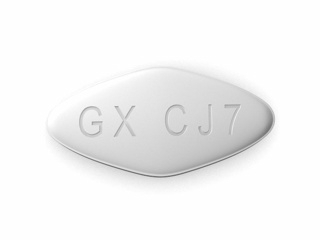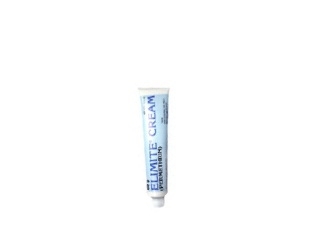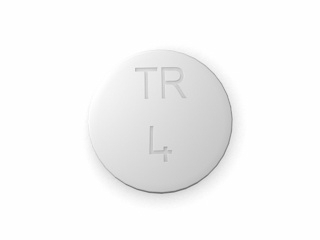Balanitis: Causes / Treatment
Balanitis: symptoms and signs
Balanitis is the common name for a group of inflammatory processes on the glans penis in men. Pathology is accompanied by pain, swelling, the appearance of erosions or cracks, and difficulty urinating. In advanced form, the disease is accompanied by many complications (the most severe is gangrene of the penis).
Symptoms of balanitis in humans manifest themselves differently depending on the age of the patient, the causes, and the stage of the disease. Common signs are a change in the color of the glans penis and its swelling and the appearance of a white coating with an unpleasant odor. Foci of erosion can cause bleeding. At later stages, the epithelium of the head becomes covered with plaques, urination is difficult due to the narrowing of the external opening of the urethra. Itching, pain syndrome, and erectile dysfunction appear.
A complication in the form of phimosis (the impossibility of diverting the foreskin) leads to the accumulation of urine under the foreskin during the act of urination. Some patients suffer from inguinal lymphadenitis or lymphadenopathy. The chronic course of balanitis is characterized by less pronounced symptoms. In this condition, there is a high probability of regular relapses of an acute condition due to weakened immunity of the patient against the background of taking antibiotics, hypothermia, non-compliance with dietary nutrition, etc.
Balanitis: causes
Factors that provoke attacks of acute balanitis can be combined into three groups: infectious lesions of the penis (cause circinate balanitis), local pathologies, and systemic diseases of the patient. The sources of the first group are:
- Viruses (including papillomavirus, and genital herpes);
- Pathological microflora (streptococci, gonococci, treponemas);
- Bacteria of the class Chlamydiae (chlamydial balanitis);
- Champignons resemble the yeast of the genus Candida (candida balanitis).
- Local lesions of the penis occur against the background of the interaction of its tissues with the latex of condoms, lubricating components, synthetic underwear materials, etc. The reaction of the body becomes allergic balanitis.
- Systemic diseases – diabetes mellitus, and lichen can cause fungal, erosive, and other types of balanitis.
Depending on the type of pathogen, viral, fungal, and bacterial balanitis are distinguished; depending on the mechanism of occurrence – post-traumatic, allergic, medicinal, etc.
For an acute infectious process, taking into account the severity of inflammation and the characteristics of the course, the following forms are characteristic:
- Simple (catarrhal). Most often, balanitis proceeds as a catarrh. Hyperemia and puffiness are moderate, general well-being suffers slightly. There is a slight itching and burning sensation. With timely and properly selected treatment, recovery occurs quickly and without the formation of scar tissue.
- Erosive (ulcerative). As the inflammatory process progresses, erosive defects form on the skin, with clear boundaries and weeping. Gradually, erosion captures an increasing surface, almost always the inner leaf of the foreskin is involved. It is impossible to completely expose the head because of the pain syndrome and the formed phimosis. Inguinal lymph nodes may be enlarged.
- Gangrenous. Further development of inflammation, deepening, and merging of erosions covered with purulent plaque lead to tissue necrosis. The patient’s condition is severe, due to intoxication, pain syndrome, and feverish reaction. Inguinal lymphadenitis and phimosis are recorded in almost all men with the gangrenous form of balanitis.
Do you have symptoms of balanitis?
Only a doctor can accurately diagnose the disease. Infectious inflammation in the absence of proper treatment causes urethritis in the patient, in the later stages – gangrene of the penis. Recurrent erosive balanitis causes phimosis (scarring) and urethral stricture (narrowing of the urethra). In severe cases, both pathologies are accompanied by urinary retention.
The detection of the first symptoms of balanitis during self-diagnosis is an important reason for contacting the clinic. The early stages of the disease require a consultation with a venereologist, a neglected course involves a visit to a urologist. When diagnosing and treating a disease, a patient may need to consult other specialists: a surgeon, an endocrinologist, and a therapist.
Treatment of balanitis
Treatment for balanitis depends on its cause. Identifying the cause of balanitis in men helps doctors determine treatment tactics. In the absence of complications in the form of phimosis, the urologist and venereologist recommend:
- use of antiseptics or antiviral agents in the hygiene of the glans penis – reduces the intensity of pain, and relieves inflammation;
- corticosteroid ointments that reduce itching and swelling;
- broad-spectrum oral antibacterial drugs to suppress possible infections.
The defeat of yeast-like fungi involves the appointment of drugs of local and systemic antifungal action. A man is advised to follow a diet, and avoid alcohol and yeast products.
A complication in the form of phimosis with systematic relapses of balanitis leads to the need to remove the foreskin. Surgical intervention will bring a rapid improvement in the patient’s condition and will allow you to lead a full sexual life. Erectile dysfunction caused by transferred balanitis and phimosis requires additional consultation with a urologist.
With a confirmed sexually transmitted disease, drugs are prescribed taking into account the pathogen. In addition, the scheme includes immunomodulators and multivitamins. Both partners should receive treatment.
Patients with nonspecific balanitis without phimosis are recommended:
The attentive care of the genitals. Daily removal of the foreskin and elimination of smegma is the basic rule of hygienic care. The naked head of the penis is washed with warm water without the use of irritating detergents.
The use of corticosteroids. In patients (regardless of age) with mild symptoms of non-infectious balanitis, local application of hormones is possible. Hormonal preparations should not be used for longer than 14 days, as this can lead to thinning of the skin.
Dermatotropic agents with immunosuppressive action. With frequent relapses, instead of corticosteroids, it is better to prescribe drugs based on ascomycin, which has immunosuppressive, anti-inflammatory, and dermatologic effects.
Antibacterial therapy. If a secondary bacterial infection has joined, the appointment of local and systemic antibiotics is indicated. In severe clinical manifestations and complications, oral administration of broad-spectrum antibacterial drugs is indicated primarily empirically.
Antifungal drugs. Balanitis of candidal etiology involves the use of antifungal drugs of local and systemic action and a diet with that rejection of sweet foods. Repeated attacks of a fungal infection may indicate serious disorders of the immune system.
Phimosis with frequent relapses of balanitis is the main indication for circumcision, which greatly alleviates the condition and allows you to have a full sexual life. With erectile dysfunction, the patient is recommended to consult a sexologist.
Prevention of balanitis
Preventing a recurrence of balanitis is relatively simple – the disease will not return if:
- good hygiene of the genitals;
- timely treatment of systemic pathologies;
- use of barrier methods of contraception;
- wear underwear made from natural fabrics.
Any symptoms that signal the return of the disease should be the reason for immediate contact with the clinic. Self-medication of balanitis can lead to complications.













